Skeleton Coast National Park, Namib-Naukluft National Park, Ongava Private Game Reserve, Tswalu Kalahari Reserve
Welcome to our 6th African Safari Trip Report! While our previous five trips have centered on more “traditional” safari destinations, this time we’re venturing into the unique landscapes of Namibia. For those who have already explored Namibia, some of what we share—especially regarding Sossusvlei—might not be entirely new. There are two main ways to experience the best of Namibia: self-drive adventures or flying into stunning camps. In this report, we’ll focus on the fly-in experience. In South Africa, we visited Tswalu, continuing the desert theme. We hope this trip report is both informative and engaging!
Hoanib Skeleton Coast Camp
This camp is one of seven managed by Wilderness Destinations in Namibia, and it truly stands out as a hidden gem. Nestled along the Hoanib Riverbed in the Wilderness concession, to the north of the Skeleton Coast National Park, it offers an exclusive experience accessible to self-drivers. The camp is the only one operating in this area, providing an unparalleled sense of luxury and seclusion in one of Namibia’s most remote corners. Key highlights include the incredible sense of isolation, desert-adapted elephants, lions, and a variety of antelopes and smaller predators. Ideally located halfway to the Skeleton Coast, the camp offers an included day trip to the coast for stays longer than three nights, which takes you across the riverbed and sand dunes along the way.
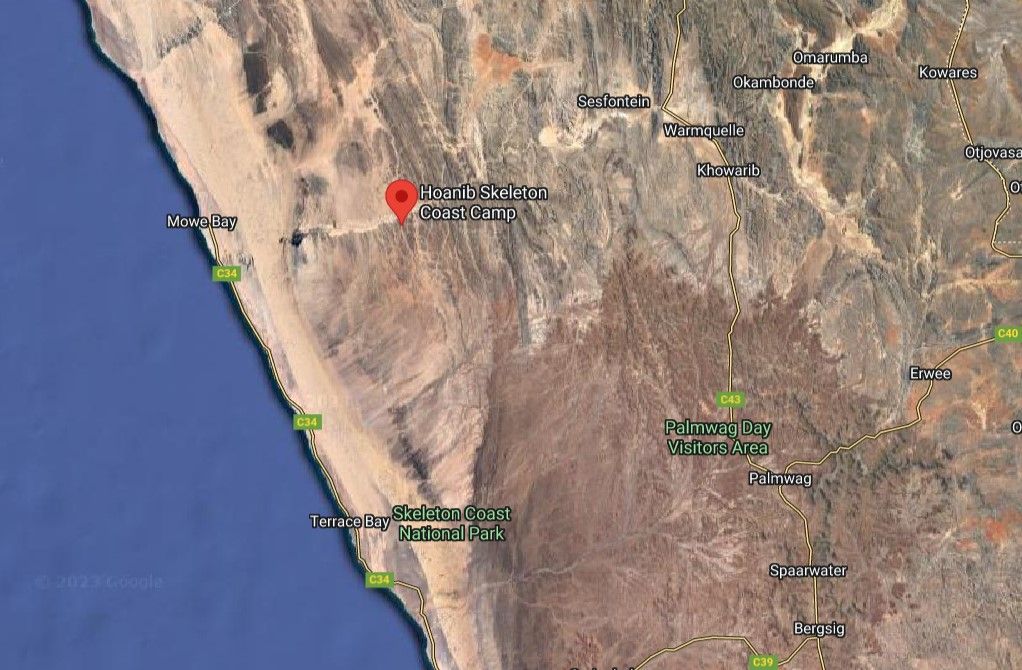
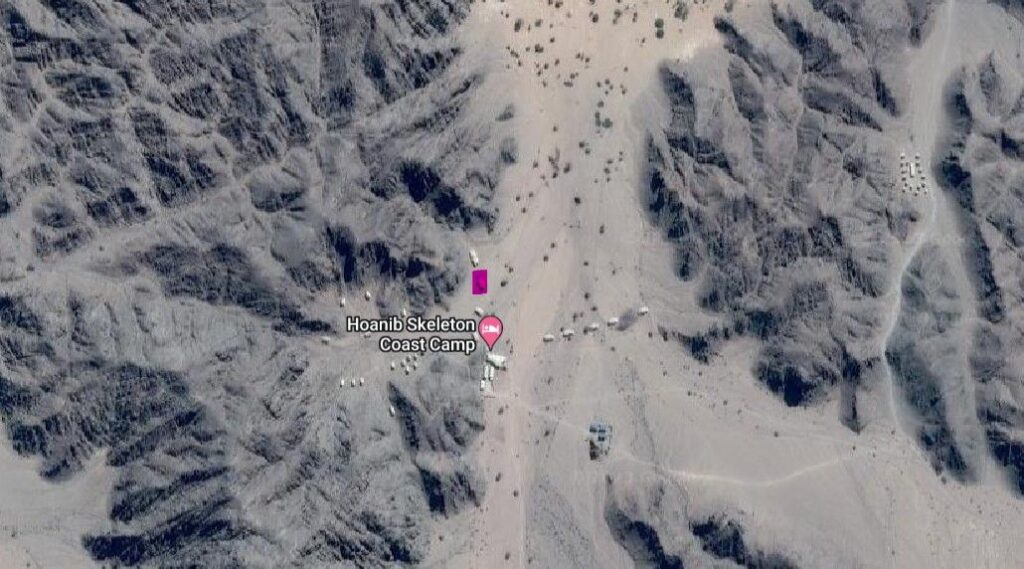
Fly-ins to the camp are typically arranged via charter flights or private transfers. For us, the private flight transfer option turned out to be more cost-effective. In fact, we opted for this arrangement for the entire duration of our stay in Namibia, with our pilot staying at the camp alongside us. We began our journey by flying into Johannesburg on Delta via Atlanta the day before, where we spent the night at the IHG OR Tambo. The following morning, we boarded an Airlink flight to Windhoek, where our private pilot and a representative from the travel agency we booked through were waiting for us. After collecting our luggage and exchanging a few pleasantries, we headed to our private Cessna for the ~2.5-hour flight. While the flight was a bit long for a small 4-seater aircraft, the views below were breathtaking. A special highlight was catching sight of Namibia’s tallest mountain along the way!
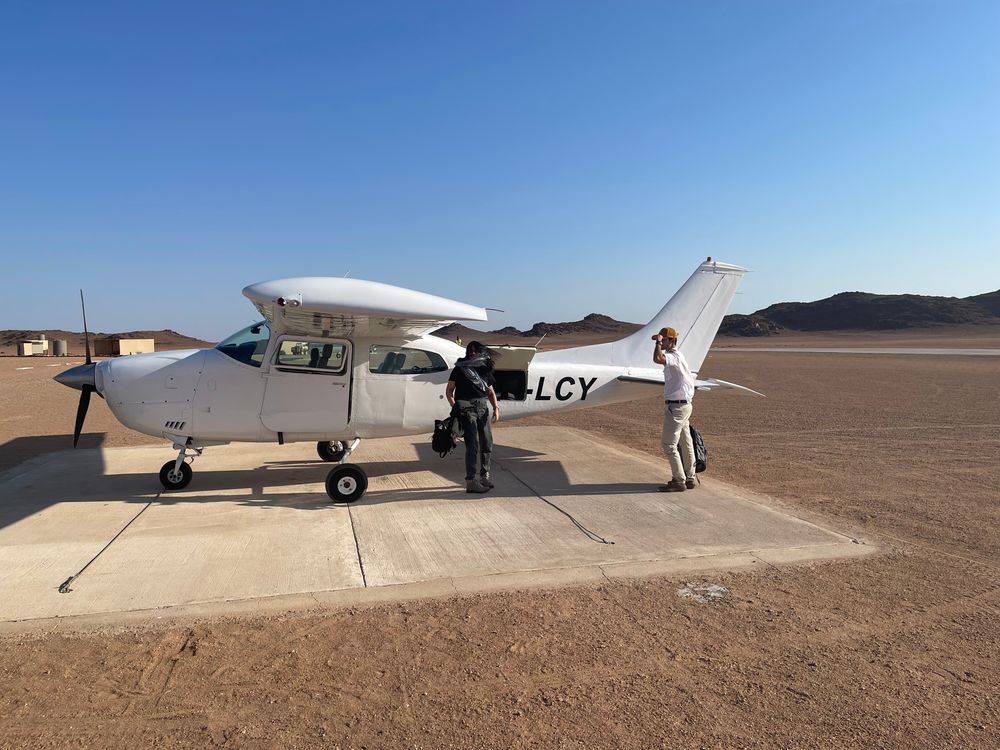
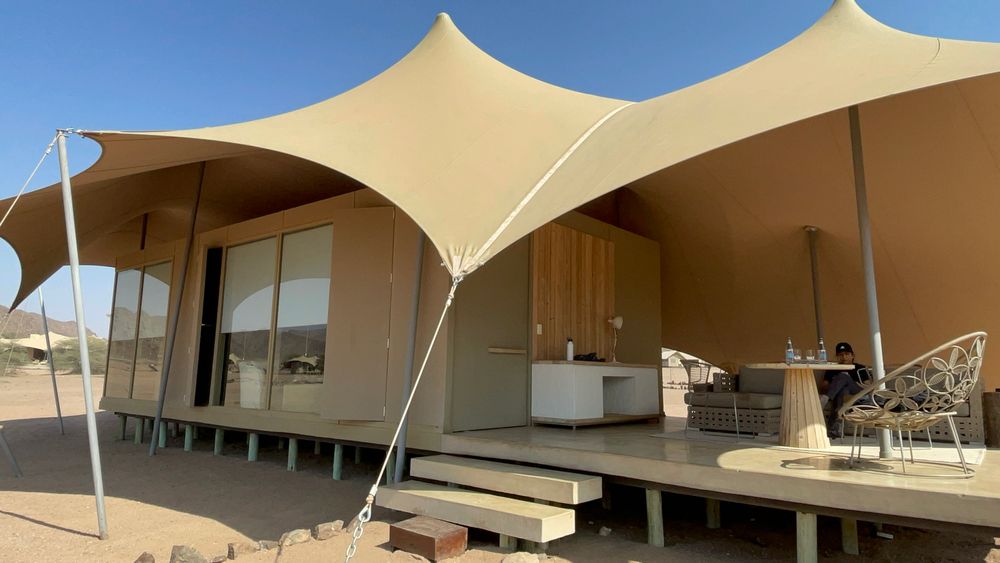
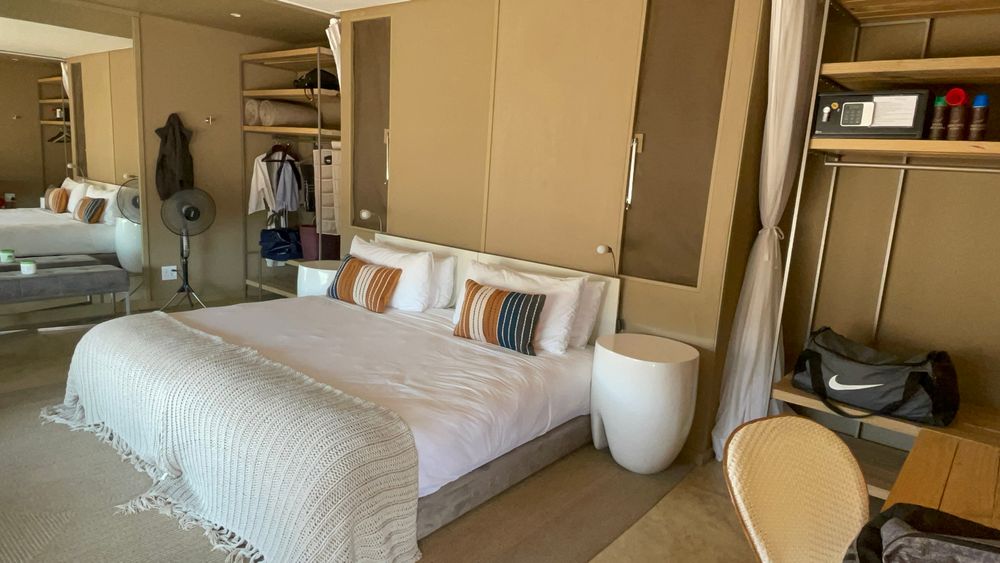
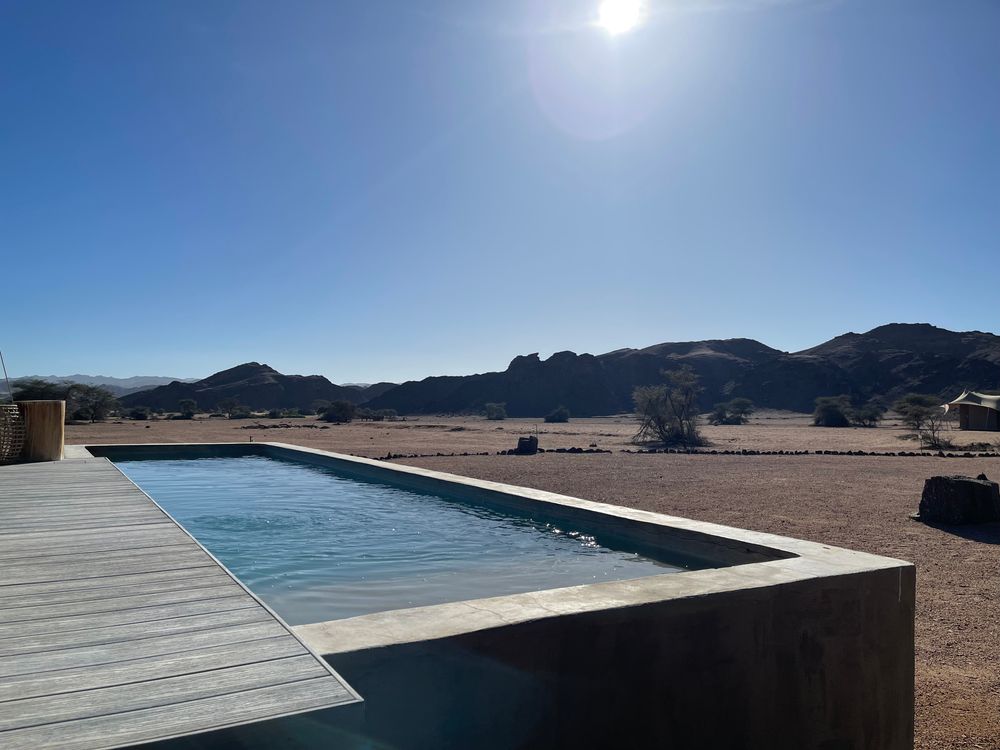
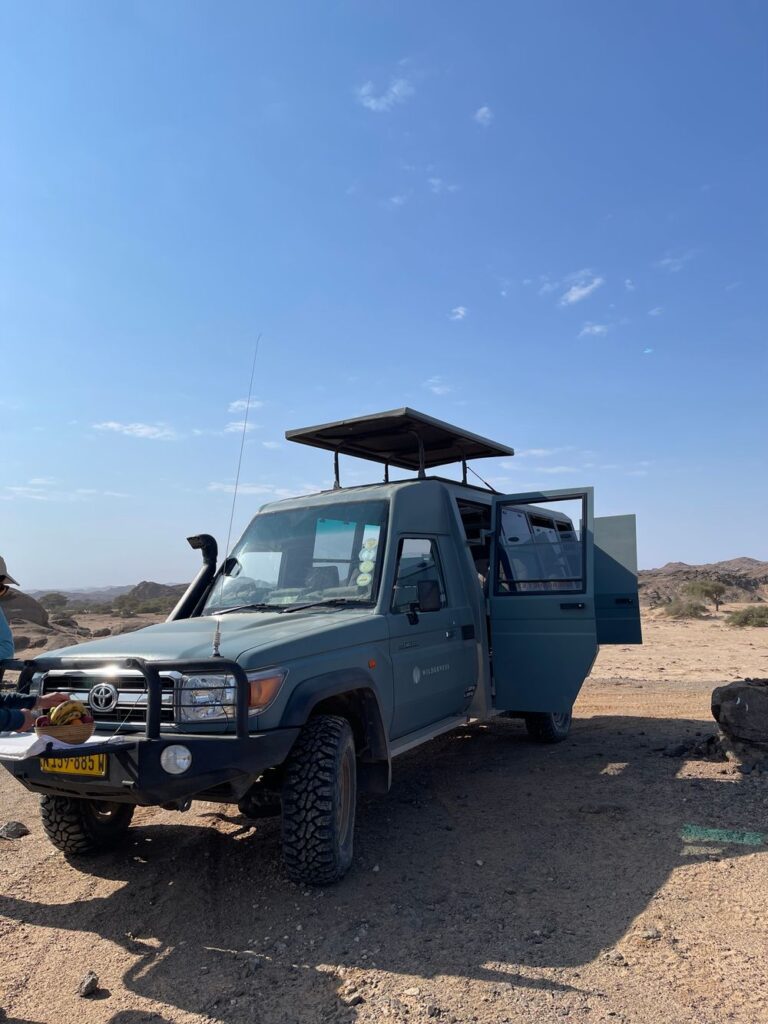
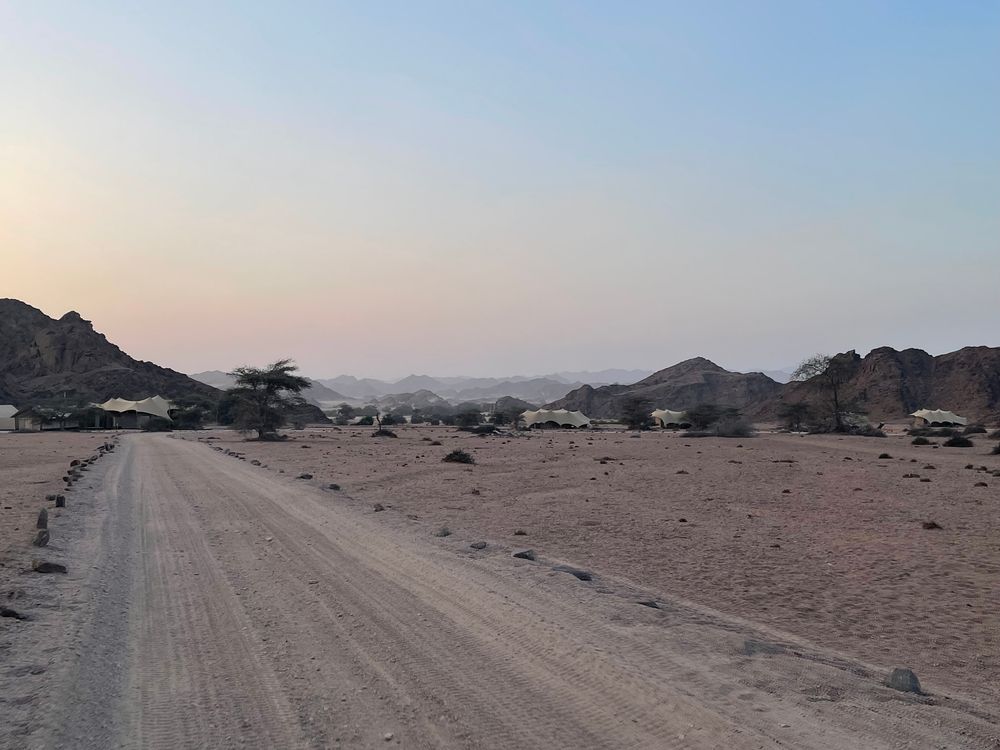
The drive from the airstrip to the camp takes about 15-20 minutes, winding through rugged, pristine, and incredibly remote terrain. The stark aridity of the landscape is astonishing, making you wonder how any animals—let alone elephants and lions—can survive and thrive in such an unforgiving climate. The answer lies in the Hoanib Riverbed, which provides a vital lifeline to this otherwise barren area. More on that later.
Upon arriving at camp, we were impressed by how well it blends into the rocky surroundings. The staff welcomed us warmly, offering a light snack before we headed out on our first game drive. We shared the vehicle with a wonderful couple from California, making for a truly enjoyable experience—quite different from the typical shared vehicle outings.
It’s worth noting that the game vehicles are not open, but rather have pop-top roofs, a necessary feature given the frequent sand and dust storms in the region. On our inaugural drive, we were fortunate to encounter two herds of elephants, a lioness, and a lone male bull elephant. Where else in the world can you spot both elephants and lions in such a striking desert landscape?
Our guide, Max, was truly a gem! We highly recommend requesting him if you visit. Not only does he have an incredible knowledge of the area, but he’s also sharp, attentive, and friendly, instantly forming a wonderful rapport with his guests—something we continue to fondly remember.
Over the next few days, we ventured deeper into the riverbed for more exciting sightings, including an African wildcat and a caracal. We also made a memorable trip to the Skeleton Coast, which was a definite highlight of our time there.
- hoanib-skeleton-coast-camp-game-sighting-1
- hoanib-skeleton-coast-camp-game-sighting-2
- hoanib-skeleton-coast-camp-game-sighting-3
- hoanib-skeleton-coast-camp-game-sighting-4
- hoanib-skeleton-coast-camp-game-sighting-5
- hoanib-skeleton-coast-camp-game-sighting-6
- hoanib-skeleton-coast-camp-game-sighting-7
- hoanib-skeleton-coast-camp-game-sighting-8
- hoanib-skeleton-coast-camp-game-sighting-9
- hoanib-skeleton-coast-camp-game-sighting-10
- hoanib-skeleton-coast-camp-game-sighting-11
- hoanib-skeleton-coast-camp-game-sighting-12
- hoanib-skeleton-coast-camp-game-sighting-14
- hoanib-skeleton-coast-camp-game-sighting-15
- hoanib-skeleton-coast-camp-game-sighting-16
- hoanib-skeleton-coast-camp-game-sighting-17
- hoanib-skeleton-coast-camp-game-sighting-18
- hoanib-skeleton-coast-camp-game-sighting-19
- hoanib-skeleton-coast-camp-game-sighting-20
- hoanib-skeleton-coast-camp-game-sighting-21
This camp and the surrounding area are truly exceptional! The staff is warm and genuine, creating an inviting atmosphere from the moment you arrive. The food is outstanding, especially considering the camp’s remote location. Our guide was a real standout—knowledgeable, attentive, and personable, making our experience even more memorable. The camp’s layout and the suites themselves are nothing short of heavenly.
In short, Hoanib Skeleton Coast Camp should undoubtedly be on every safari enthusiast’s bucket list—if it isn’t already! Yes, it doesn’t come cheap, but as the saying goes, you get what you pay for. And what you get here is an experience beyond compare, one that will leave you with memories to treasure for a lifetime. This camp checks every box for a luxury safari destination, set in the vast, remote beauty of Namibia’s Skeleton Coast region. We truly can’t express enough just how special this place is, and rest assured, we’ll be returning!
Little Kulala Camp
After our incredible stay at Hoanib Skeleton Coast Camp, we set the bar high as we boarded our private Cessna for the next leg of our journey to Little Kulala Camp, also operated by Wilderness Destinations. Located in their private concession bordering the Namib-Naukluft National Park, Little Kulala offered a new adventure.
Our flight took us first to Swakopmund for a quick refueling stop, followed by a scenic route past Walvis Bay. We flew over the three famous shipwrecks along the coastline before turning inland over the vast Namib Desert dunes. The highlight of the flight was passing over Big Daddy, one of the tallest dunes in the world, before making our descent into the Geluk airstrip. The scenic flight alone was worth the trip, offering breathtaking views that made the journey feel like an adventure in itself!

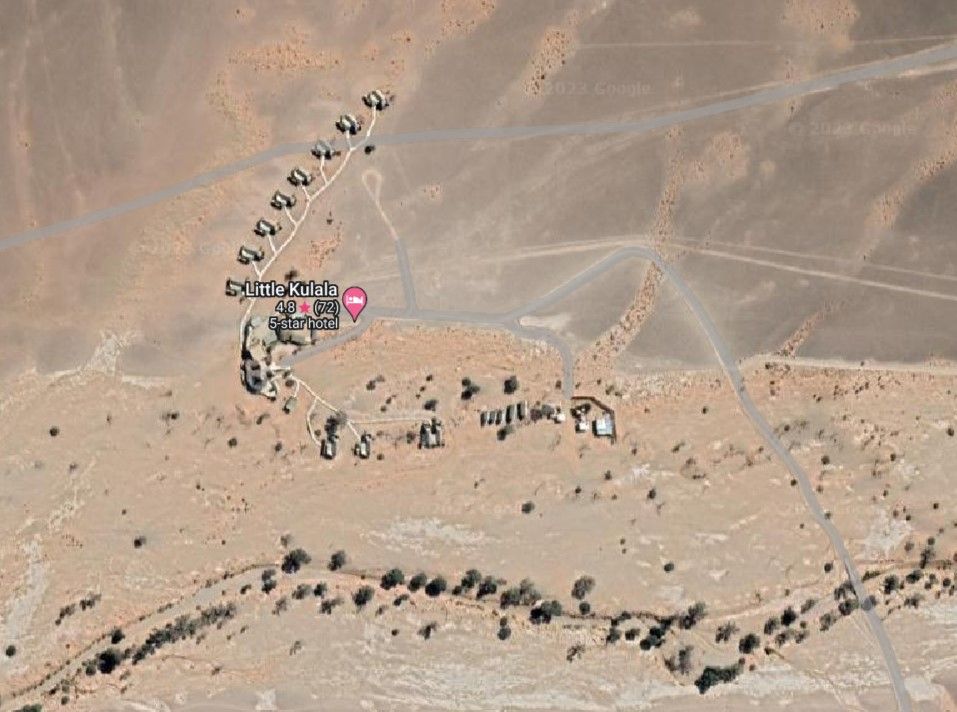
A little about Little Kulala and the Wilderness concession: Wilderness operates two camps within their concession, and as the name suggests, Little Kulala is the more intimate, exclusive counterpart to the larger Kulala Desert Lodge. While Kulala Desert Lodge boasts over 25 suites and has more of a hotel-like feel, Little Kulala offers a more personalized experience with just 10 suites. If you’re looking for a quieter, more secluded stay, Little Kulala is definitely the way to go.
The concession is home to a range of smaller predators like brown hyenas, jackals, and Cape foxes, as well as herbivores such as oryx and springbok. While the more elusive nocturnal animals do live here, they are equally difficult to spot. Birdlife is also abundant in the area. The lack of larger predators makes it safe to walk around the camp, even at night.
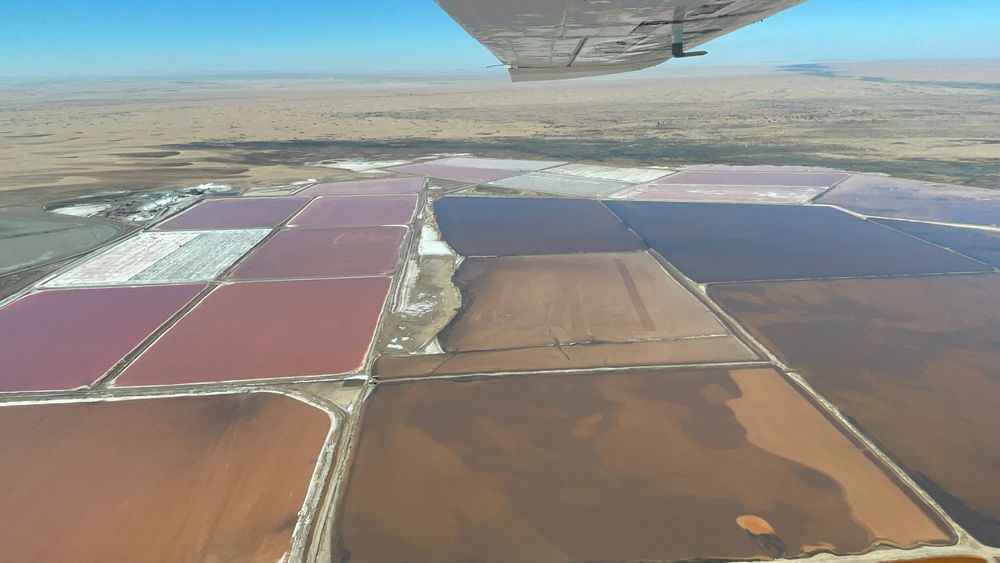
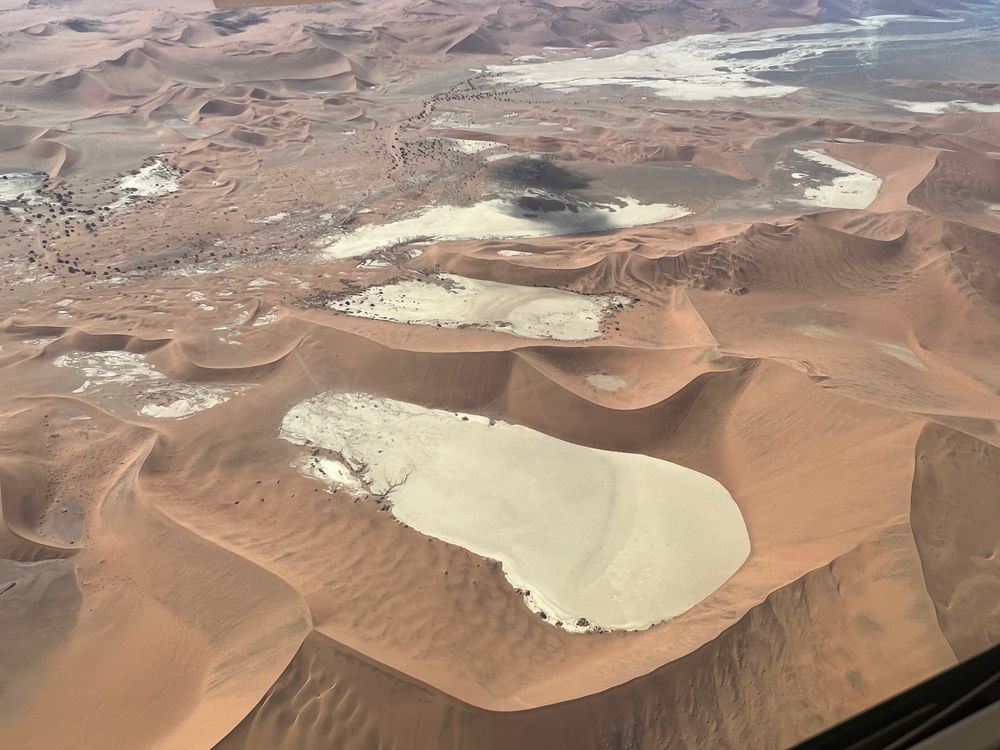

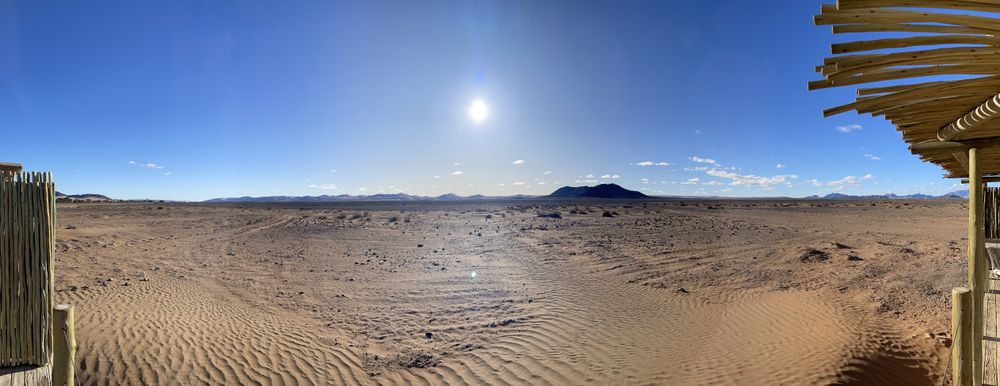
Wilderness offers a variety of activities within their concession, including quad biking, e-biking, and balloon safaris. And yes, we tried both! Biking alongside oryx and springbok was an unforgettable experience. For us, though, the charm of the concession lies in the experience itself—taking in the incredible scenery and vast vistas, unwinding on a rocky cliff with a gin and tonic while watching the sunset, with nothing but the sounds of the breeze and the company of our guide.
Another significant advantage of staying at either of the Kulala camps is Wilderness’s private entrance to the tar road connecting Sesriem to Sossusvlei. What does this mean? Unlike other visitors who have to enter the park via the main gate, often having to wait in line alongside self-drivers and guests from other lodges, Wilderness guests have direct access through a private gate located about halfway between the Sesriem main gate and Sossusvlei. This gave us the added benefit of seeing the dunes glow in the morning sunrise without the interruption of other vehicles.
In our view, any safari enthusiast seeking a truly immersive experience in this region should prioritize the Wilderness concession over other luxury lodge operators. The combination of exclusivity, location, and the range of activities offered makes it a standout choice for a memorable stay.
As mentioned, our visit to Little Kulala had several key objectives. We were eager to experience the towering dunes, hike up Big Daddy, visit the iconic Deadvlei, explore the Sesriem Canyon, and, perhaps most importantly, immerse ourselves in the vastness of the Wilderness concession itself. The sheer scale and beauty of this area have to be experienced firsthand to fully grasp what it means to truly “soak it all in.” It’s an environment that can’t be adequately captured in words or photos—only by being there can you feel the profound sense of tranquility and awe that comes with being surrounded by such otherworldly landscapes.
The private gate to the Wilderness concession is about 10 minutes from Kulala Desert Lodge and roughly 30 minutes from Little Kulala. On our morning drive to Sossussvlei, we enjoyed unobstructed views of the dunes, without the presence of any other vehicles. However, as we continued further, we eventually began to see self-drivers starting to pass us.
For those unfamiliar with Sossussvlei, here’s a bit of background: you can self-drive to the area via the main gate at Sesriem, as many visitors do. There are two car parks once you get into the park. The first car park is located at the end of the tar road (about 60 km from Sesriem), and it’s where 2×4 vehicles can park. From here, you’ll need to take park vehicles to the 4×4 car park. The second car park, the 4×4 car park, is located further in and is accessed via a sand road.
If you’re up for a climb, Dune 45 is the shortest of the “climbable” dunes and is the first one you’ll encounter along the tar road. It’s quite popular and accessible for most visitors. For those looking for a more challenging climb, Big Daddy is the tallest dune at Sossussvlei, standing at around 1,000 feet! To reach it, you’ll need to head to the 4×4 car park and then take a short 10-minute walk to the base before starting the ascent. Another notable dune is Big Mamma, located near the picnic area around Big Daddy—though it’s a bit less well-known, it offers a great climbing option as well.
Lastly, there’s the famous Deadvlei, a striking salt and clay pan surrounded by towering dunes, especially Big Daddy. It’s one of the most iconic locations in the park and can be reached from the 4×4 car park, often becoming the highlight of the visit for many.
Yes, we did it—we climbed Big Daddy to the summit, and we can proudly claim those bragging rights! It’s definitely an experience worth having for anyone able to make the trek. If you’re planning to tackle it, just be sure to give yourself plenty of time and patience. The climb follows the crest of the dune, and while it’s challenging, it’s entirely doable if you take it at your own pace.
We’d recommend starting early in the day—this way, you’ll avoid the larger crowds of climbers, and the weather will be a bit cooler, making the ascent more manageable. Once you reach the summit, the view is breathtaking—one of the best in all of Namibia.
When it comes time to descend, you can either slide down the dune (which looks fun but can be a bit tiring) or walk down the side. We’d recommend walking down, as it’s easier on the legs and gives you a chance to take in the panoramic views as you go.
Descending brings you directly into Deadvlei, which is a surreal, otherworldly place to arrive at after the climb. The entire experience, from the climb to the views and the final descent into Deadvlei, is something you’ll never forget. It’s more than worth the effort—this is an experience that truly lives up to the hype!
- little-kulala-camp-5
- little-kulala-camp-6
- little-kulala-camp-7
- little-kulala-camp-8
- little-kulala-camp-9
- little-kulala-camp-10
- little-kulala-camp-11
- little-kulala-camp-12
- little-kulala-camp-13
- little-kulala-camp-14
- little-kulala-camp-15
- little-kulala-camp-16
- little-kulala-camp-17
- little-kulala-camp-18
- little-kulala-camp-19
- little-kulala-camp-20
- little-kulala-camp-21
- little-kulala-camp-22
- little-kulala-camp-23
- little-kulala-camp-24
- little-kulala-camp-25
- little-kulala-camp-26
- little-kulala-camp-27
Overall, Little Kulala is another true gem in the Sossussvlei area. The camp staff was exceptional, and we had the pleasure of spending time with the camp manager, Lizelle, who was not only fun to chat with but also made our last evening memorable as we sat outside enjoying the tranquility of the place.
While our guide wasn’t quite on the same level as the one at Hoanib, he was still very good and made the experience enjoyable. One of the standout features of Little Kulala is the stunning vistas of the concession and its proximity to Sossussvlei—both big advantages for guests. However, it’s important to note that you shouldn’t come here expecting to see lions or elephants. This is a place best appreciated for its dramatic dunes and sweeping landscapes.
As for whether we would revisit—absolutely! Little Kulala offers an experience that’s hard to replicate, and we’d gladly return for the beauty, the serenity, and the unforgettable desert views.
Ongava Tented Camp
Our final stop on this incredible Namibia journey took us to the Etosha National Park area. As regular readers of our blogs know, we typically prefer to stay outside national parks when possible. Around Etosha, there are two private reserves: Ongava, located on the southwestern edge, and Onguma, on the eastern side. We chose Ongava for its unique offering—a tented camp that blends seamlessly into the surrounding landscape.
Ongava operates a total of four camps, one of which is fully fenced. The reserve is large enough that the camps are spread out and not in close proximity to one another, ensuring a more secluded and peaceful experience.
So, off we went on to the final leg of our journey, continuing our adventure by a private Cessna. After a quick refueling stop at Eros in Windhoek, we enjoyed a scenic 90-minute flight to the Ongava airstrip, where the next chapter of our Namibian adventure awaited.
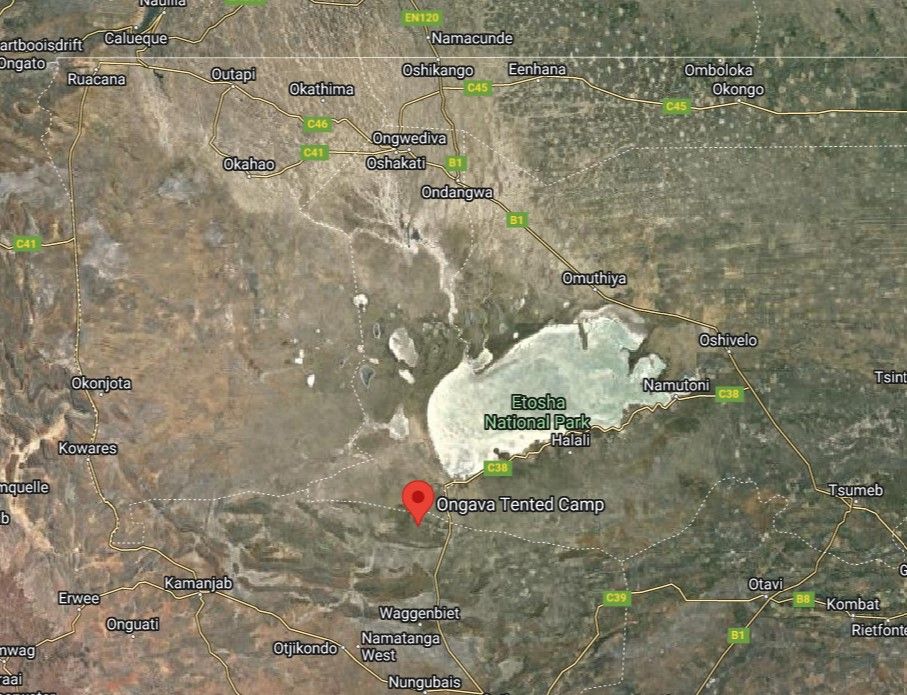

The transfer to the camp took about 45 minutes from the airstrip, as it’s located in the farthest western corner of the reserve, in a more remote and secluded area. The drive itself was peaceful and uneventful—until we encountered a magnificent bull elephant making his way to the watering hole. He crossed directly in front of us, providing an unforgettable moment and a perfect introduction to the wildlife of Ongava.
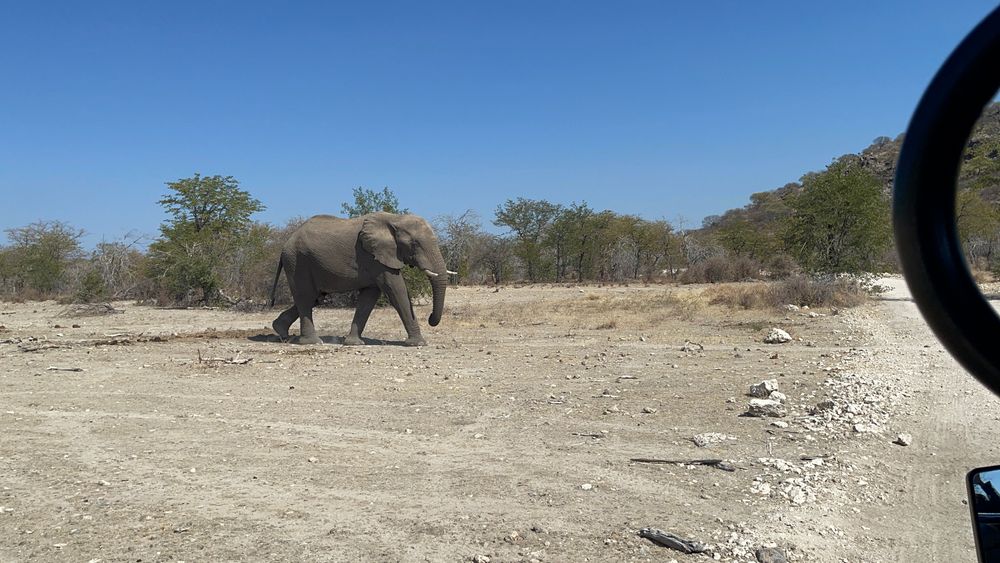
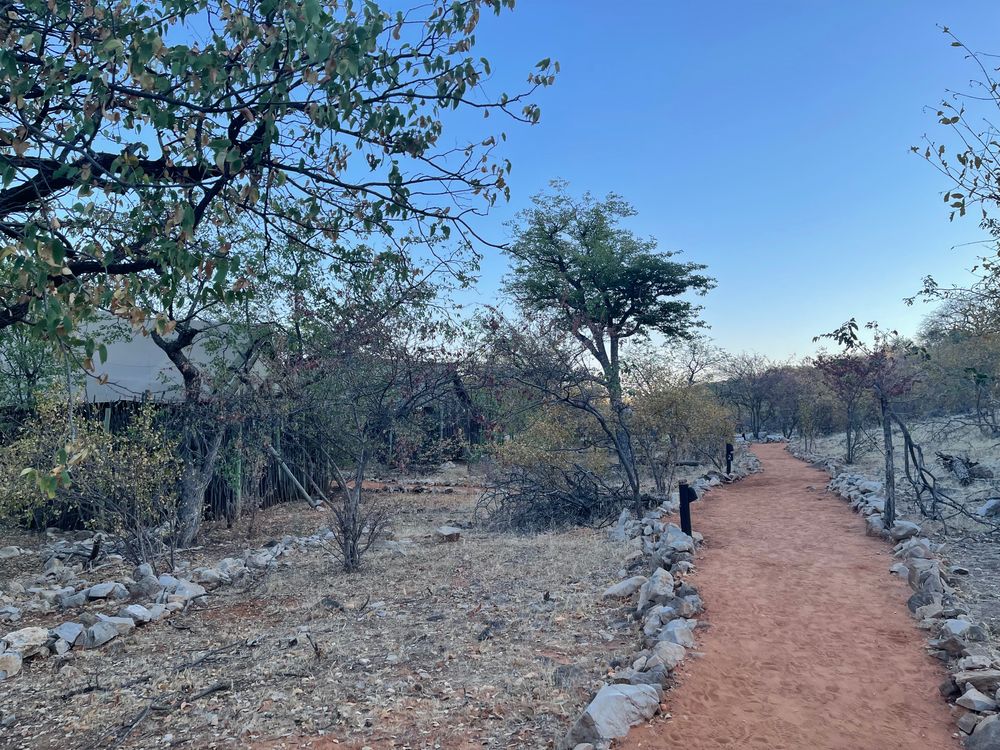
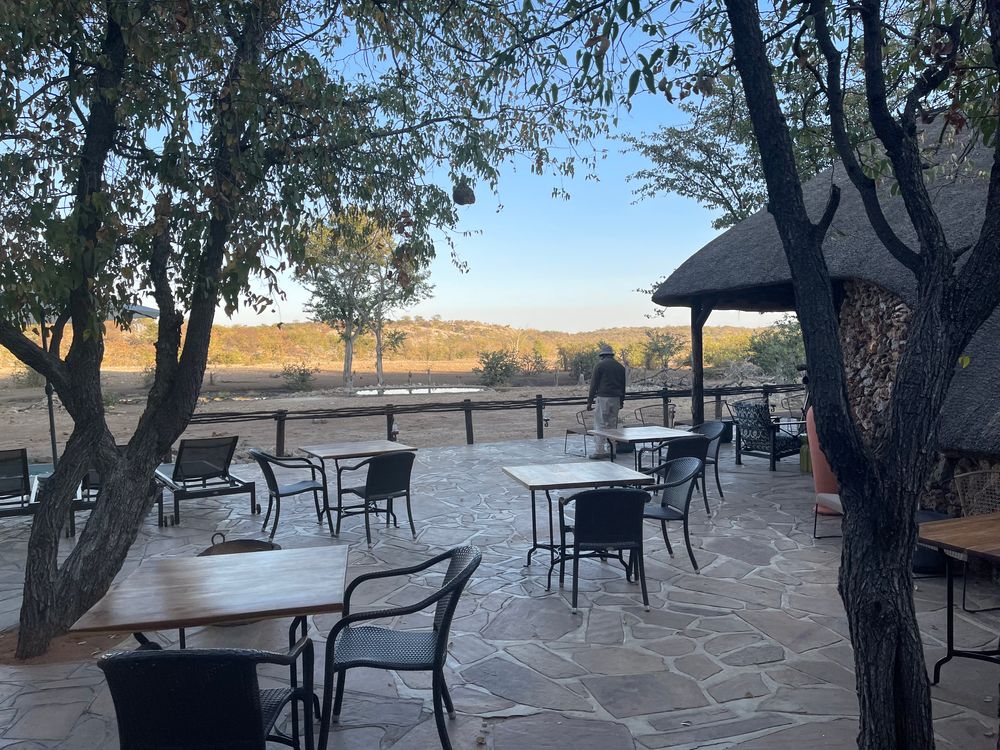
The camp today consists of around 12 suites, with the common area situated in the center, offering a nice balance of privacy and shared spaces. While the camp has a slightly dated feel, it retains a strong sense of ruggedness and wilderness that we absolutely loved. One of the standout features is the proximity of the watering hole—it’s one of the closest we’ve encountered at any camp. The wildlife comes right up to the edge, offering incredible views and giving guests a front-row seat to nature’s drama. It’s an experience you can’t quite replicate elsewhere!
The camp manager, Orlando, shared an intriguing story with us about a pride of lions that had been frequenting the area very close to camp, even walking along the pathways just two nights before we arrived. Unfortunately, by the time we got there, the lions had retreated back into the bush. Still, hearing about their proximity made it feel like they were right there with us, and it brought back memories of our encounter with a male lion while walking to the main area from our tent at Duba Plains Camp back in May 2023! While it may sound thrilling to have lions so close, it’s important to always remain vigilant. We prefer staying in camps that are not fenced, as it adds to the feeling of truly being at one with nature. However, this also means being conscious of the wildlife around us and respecting the African bush for what it is.
In terms of wildlife sightings within the reserve, we enjoyed seeing elephants, rhinos, lions, and glimpses of other herbivores. We also took a morning trip into Etosha National Park, entering via the Anderson Gate. As with any national park, the standard rules apply—no off-roading and the presence of many self-drivers. We had an unfortunate encounter with a group of unruly self-drivers at a lion sighting of a pair mating. Some were out of their vehicles, while others were hanging out of windows or even standing on their car roofs. This behavior is not only unsafe but also disruptive and disrespectful to the wildlife.
Despite that, one of the best moments in the park was spotting two pairs of honey badgers, although they were far off and only visible with binoculars. The real highlight came when we watched two mature bull elephants calmly approach a watering hole for a drink, their sheer size and presence making the moment unforgettable. It was a perfect reminder of the beauty and majesty of Africa’s wildlife.
- ongava-tented-camp-game-sighting-1
- ongava-tented-camp-game-sighting-2
- ongava-tented-camp-game-sighting-3
- ongava-tented-camp-game-sighting-4
- ongava-tented-camp-game-sighting-5
- ongava-tented-camp-game-sighting-6
- ongava-tented-camp-game-sighting-7
- ongava-tented-camp-game-sighting-8
- ongava-tented-camp-game-sighting-9
- ongava-tented-camp-game-sighting-10
- ongava-tented-camp-game-sighting-11
- ongava-tented-camp-game-sighting-12
- ongava-tented-camp-game-sighting-13
Two of the most special experiences during our time at Ongava were the guided walks we did to track white rhinos and elephants on foot. The confidence and expertise of our guide, Tuly, were truly remarkable. He took us closer to rhinos and elephants than we had ever been on foot, guiding us safely and respectfully through the bush. It was one of those rare, once-in-a-lifetime moments, and we felt incredibly lucky to have had him all to ourselves during our stay (even though we didn’t reserve a private vehicle). Tuly is an exceptional guide, and we wholeheartedly recommend him to anyone visiting the area.
The following pictures from our two bush walks are meant to showcase just how extraordinary these encounters can be when done with the utmost care, respect, and awareness of the animals and their environment. After all, we’re entering their home, not the other way around. Observing these majestic creatures in their natural habitat, understanding their behavior, and watching them go about their daily lives is a deeply moving experience that we’ll never forget.
Over the course of many walks in the bush, we’ve come to appreciate how important it is to respect these animals and the land they inhabit, while taking in the moment. Reading about these experiences in books or blogs is vastly different from living them firsthand. If you ever get the chance, we highly recommend experiencing it for yourself—under strict, respectful conditions, of course. It’s an experience that will leave you with a deeper connection to the wild and a lasting sense of awe for the creatures that call it home.
The encounter with the pair of rhinos was truly unforgettable. As soon as they caught our scent, they seemed uncomfortable and immediately became alert. We stayed still, positioned behind a bush, allowing the rhinos a few moments to calm down. Slowly, they relaxed and returned to grazing, realizing that we weren’t a threat. It was a tense yet awe-inspiring moment. Although we were so close to them, it’s important to remember that we must always remain vigilant when in the presence of such powerful animals. After about 30 minutes of observing them, the rhinos began to move toward us as part of their grazing routine. At that point, we started to back off, giving them space to continue undisturbed.
As for the elephants, we initially approached them on foot, but our guide, with his vast experience, suggested we take a different route up a rocky cliff to get a better vantage point. As we made our way around, the elephants caught wind of our presence and, like the rhinos, showed signs of displeasure. However, they quickly moved on, resuming their peaceful grazing and drinking without much fuss.
In both cases, it was clear that the key is to respect the animals’ space and let them carry on with their natural behaviors. We were simply there to observe, not to interfere in their daily routines. These encounters were not only awe-inspiring but also a reminder of the delicate balance between humans and wildlife. The best experiences in the bush are those where you respect the animals and their space, allowing them to live freely while you quietly observe from a safe distance.
Overall, Ongava Tented Camp offers a rough, rustic charm that feels very much in tune with its surroundings. While the camp may appear a bit worn or old-fashioned to some, its raw, authentic wilderness vibe is what makes it special. It might not be for everyone, but for those who appreciate the rugged beauty of the African bush, it’s a fitting place to stay. The staff, led by Orlando, the camp manager, were incredibly friendly and accommodating, adding a warm, welcoming touch to the experience. One area that could be improved is the food, though the camp is aware of this and is working on enhancing the culinary offerings.
Excitingly, Ongava Tented Camp is undergoing a major renovation starting in January 2024! The camp will soon feature five magnificently spacious suites, each thoughtfully designed to blend luxury with the raw, rugged adventure of the African bush. Additionally, the camp is working to reduce its carbon footprint, making the experience even more eco-friendly. While the construction may take 6-8 months, we’re certain that the finished product will be worth the wait—what we’re calling “Ongava Tented Camp 2.0” promises to be something truly spectacular.
If you’re looking to experience the African bush in a truly immersive way, with the opportunity to get up close and personal with the wildlife, we wholeheartedly recommend Ongava Tented Camp. Despite its current, rustic charm, it offers a one-of-a-kind experience that will leave you with memories you’ll cherish forever.
Tswalu Kalahari
Tswalu is the largest private reserve in South Africa, spanning over 300,000 acres. It’s renowned for its exceptional nocturnal sightings, including rare creatures like the pangolin and aardvark, which was one of the main reasons we chose to visit—hoping to catch a glimpse of these elusive animals. In addition to its wildlife, Tswalu offers a stunning landscape that blends the striking beauty of the Kalahari: red sand dunes (though not as deep red as those in the Namib Desert) and vast, rolling hills stretching as far as the eye can see.
Another highlight of Tswalu is its Michelin-star restaurant, which offers a truly unique dining experience, making it a perfect complement to the wilderness adventure. With all that in mind, we hope this trip report proves as informative as it is engaging, offering a glimpse into one of South Africa’s most extraordinary destinations!

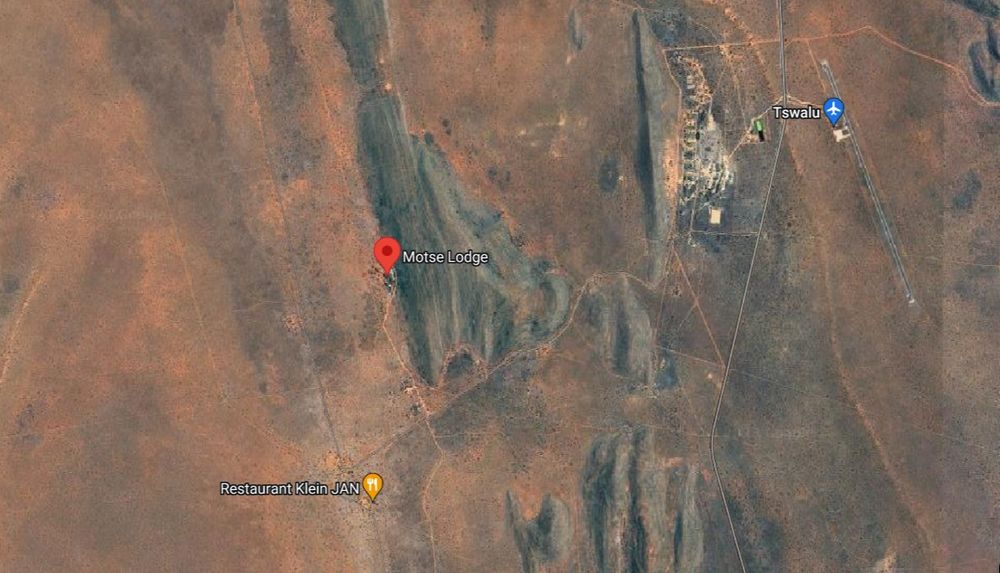
Tswalu is certainly considered an uber-luxury lodge, and its price point reflects that exclusivity. To be transparent, we booked nearly a year in advance, taking advantage of several special offers that helped reduce the cost a bit, but it still remains a high-end experience, on par with the rates at Singita.
As mentioned, Tswalu is located in the Kalahari region of northwestern South Africa, not far from Upington, in a remote and breathtaking part of the country. The location, along with the unparalleled luxury and wildlife experiences, makes it one of South Africa’s most sought-after safari destinations.
Tswalu is owned by the Oppenheimer family, one of South Africa’s most prominent business families, who also own Fireblade Aviation at OR Tambo Airport. As a result, all transfers to Tswalu are exclusively operated by Fireblade, ensuring a seamless and luxurious experience from start to finish.
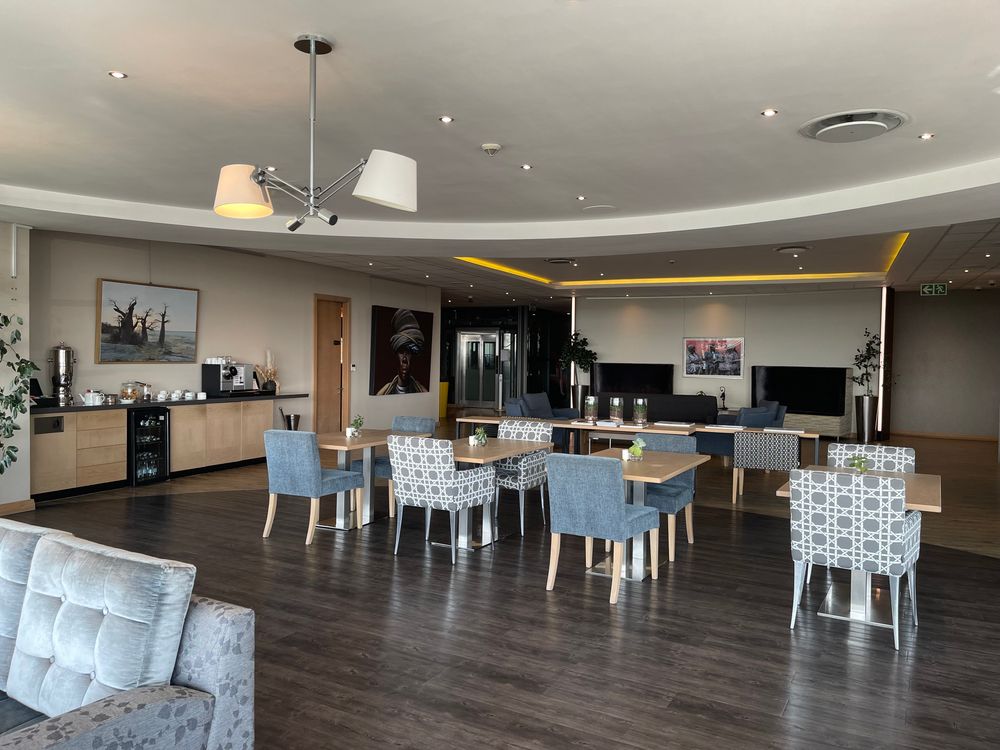
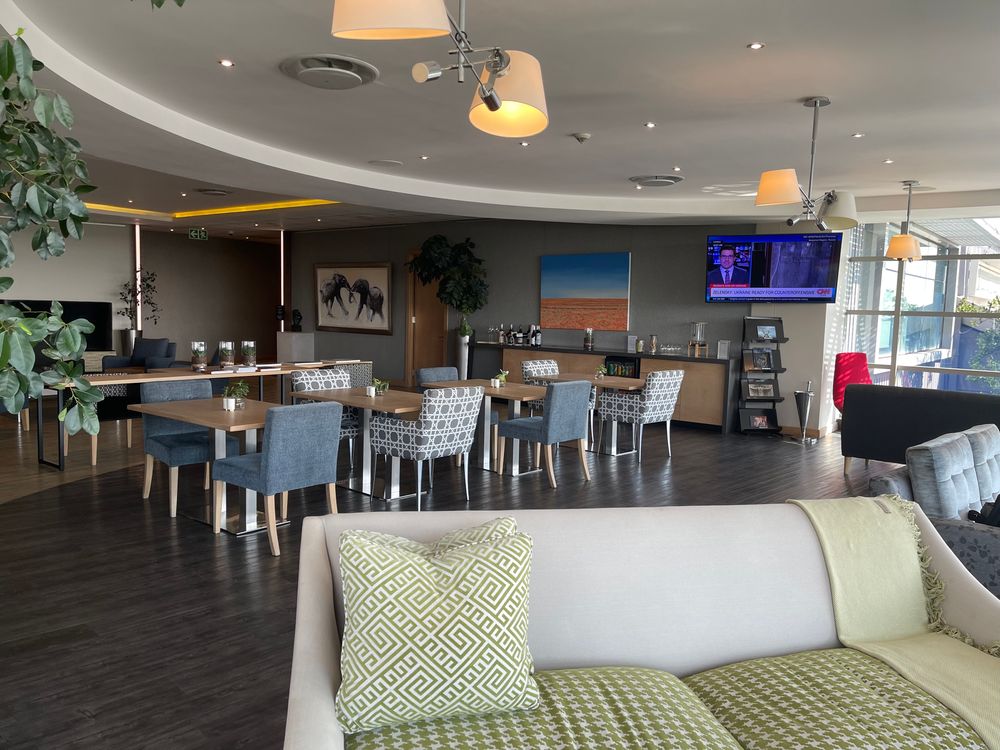
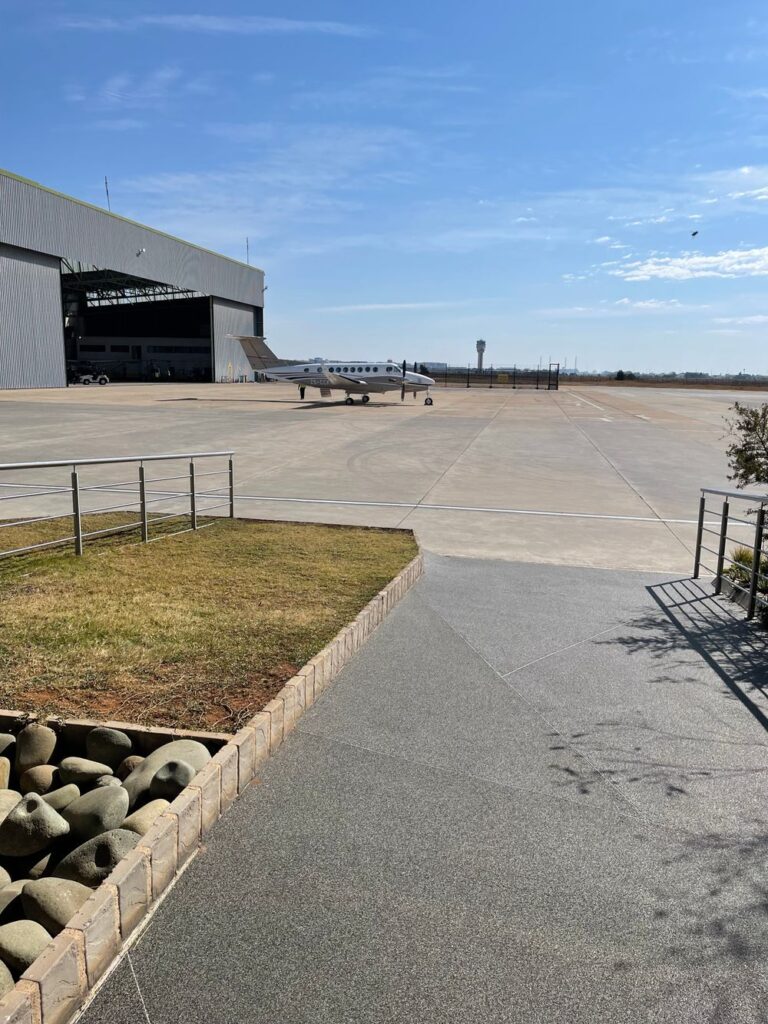

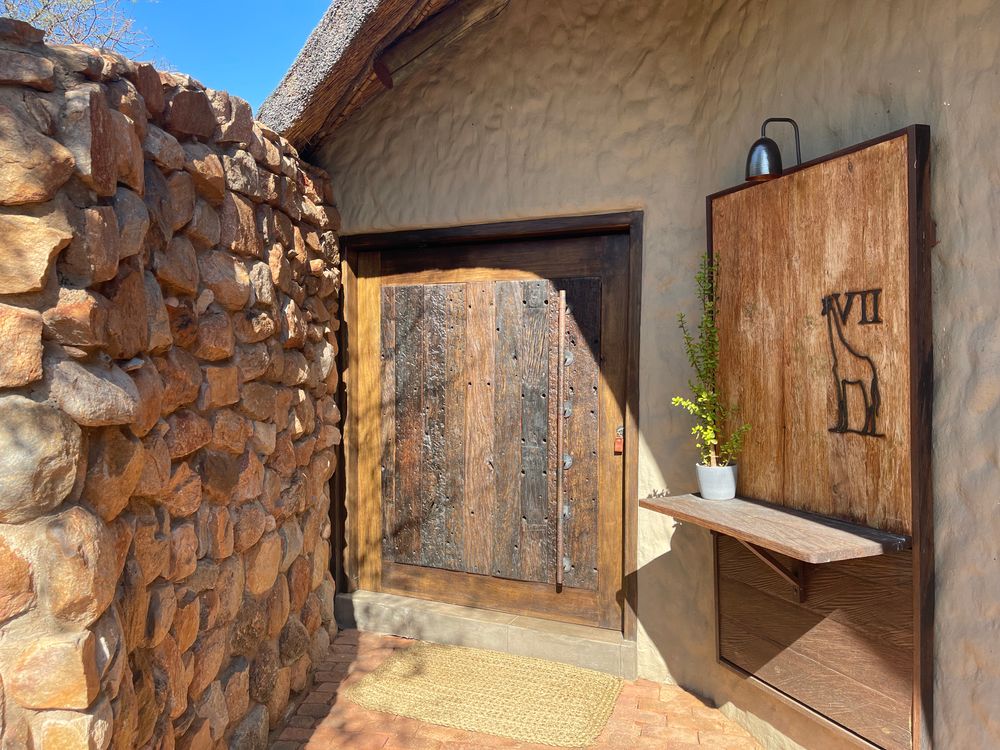
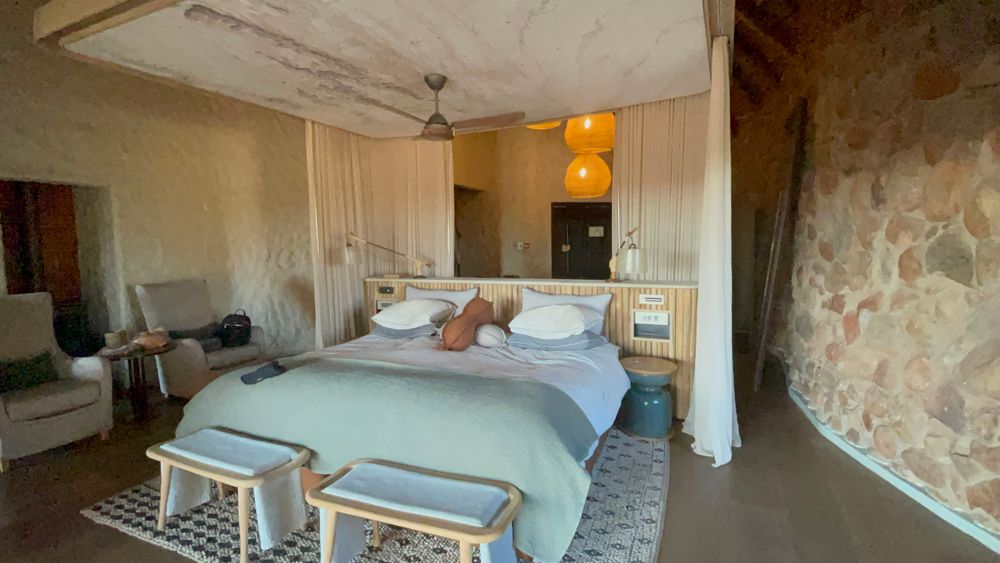
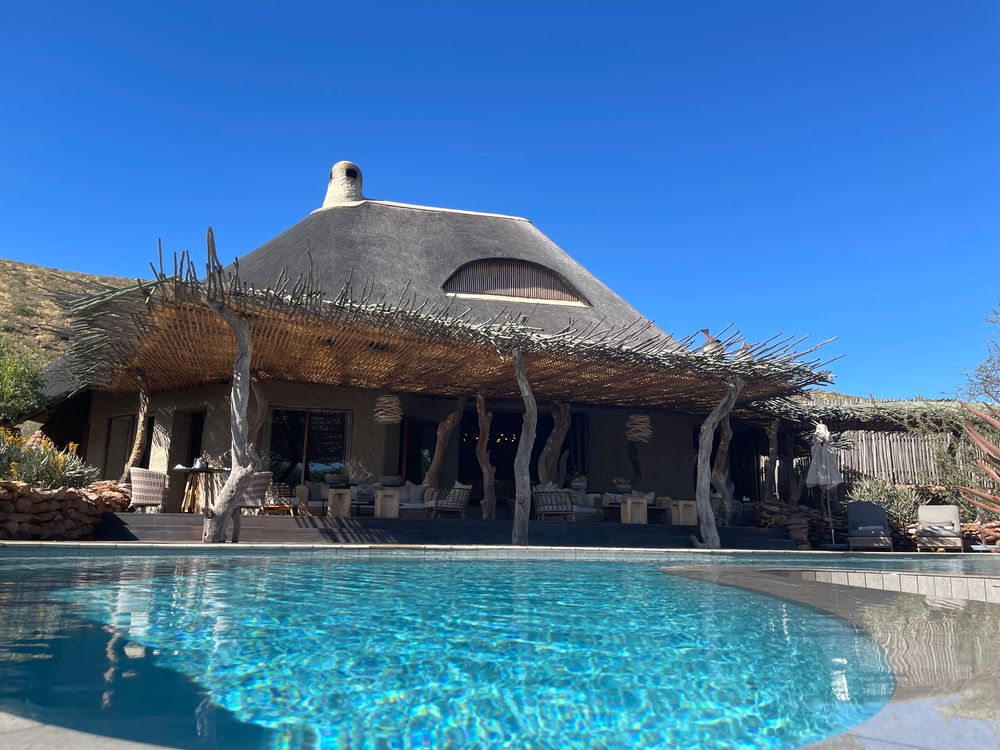
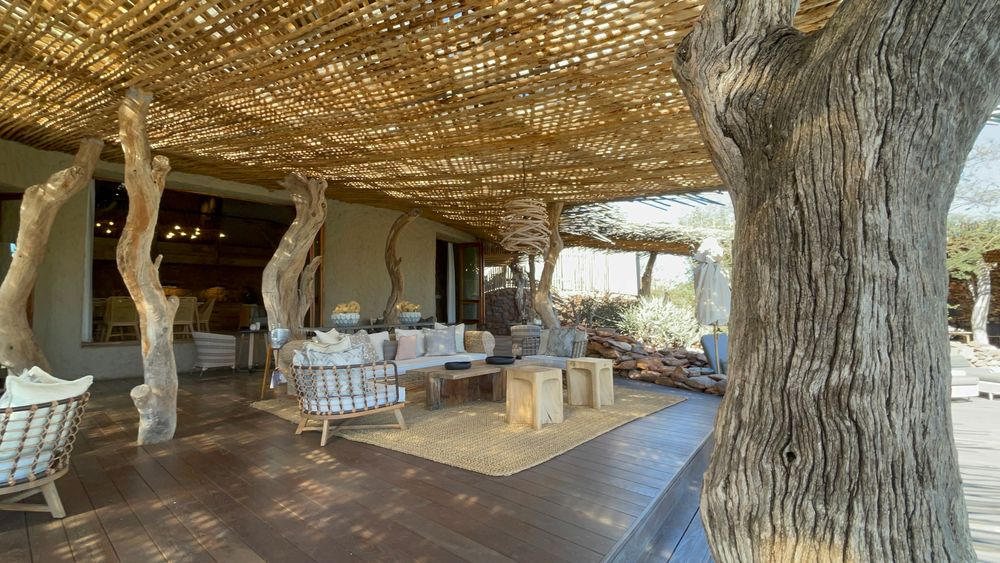


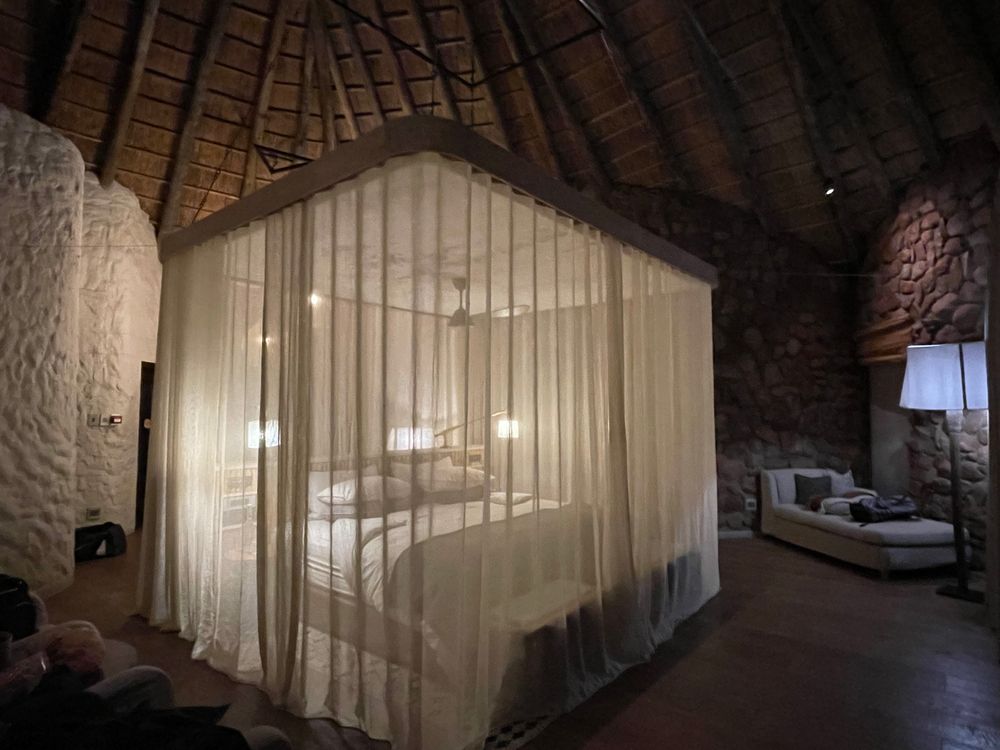
To date, Tswalu has operated just one lodge, Motse, which offers 8 spacious suites, providing an intimate and exclusive atmosphere given the vastness of the reserve. A standout feature of the lodge is that each suite comes with a private guide, tracker, and vehicle, all included in the rate, further enhancing the personalized safari experience. For larger groups or families, there is also the Tarkuni homestead, which caters to those looking for a more private, family-oriented experience.
As of July 2023, Tswalu introduced a new offering—Loapi, a tented camp consisting of 6 very large and spaced-out tents. The concept of Loapi is unique, as there will be no central common area; instead, each tent will operate independently with its own butler, chef, guide, tracker, and vehicle. While this provides a high degree of privacy and exclusivity, some may find the lack of a central gathering space creates a sense of isolation. Additionally, Loapi is fenced, which slightly diminishes the 1:1 immersion with nature that some guests might expect from other tented camps that offer a more open, unfenced experience.
This new tented camp option adds variety to the types of accommodation available at Tswalu, appealing to those who value complete privacy and the luxury of having everything tailored to their specific needs. However, the fenced-in environment at Loapi may not be to everyone’s taste, particularly those who prefer the unrestricted freedom of an open safari experience.
Let’s break it down into the pros and cons, based on our experience. The positives include the size of the reserve, the exclusivity of the property, and the unique Michelin-starred restaurant. Additionally, there’s a higher likelihood of spotting nocturnal animals, which is a nice bonus. On the downside, Motse feels quite dated and could benefit from some renovations. The lions are confined to one section of the reserve—while this area is large, it still detracts from the experience. There are no elephants, and while the lodge prides itself on having wild dog packs, the current pack has been reduced to just three adults and about twelve pups near the southern boundary. Overall, the wildlife population feels sparse. The food at Motse also didn’t live up to expectations for the price point, and the staff—especially our guide—left a lot to be desired. We had several drives where we didn’t see any wildlife for hours, which we suspect was partly due to the guide’s inexperience or lack of knowledge about where to focus our search. All in all, we found more negatives than positives in our stay, and it didn’t quite meet our expectations.
The airstrip is also enclosed, and we were informed that this was to accommodate the larger planes used by the Oppenheimer family. However, we didn’t quite understand this rationale, as other reserves have unfenced airstrips that handle similar arrivals and departures without issue. It’s worth noting that the airstrip is situated within the “lion” section of the reserve, while Motse is located in the “non-lion” area, requiring about a 30-minute drive from the airstrip to the lodge.
When we arrived, our guide (as is typical) asked us about our interests, and we shared them with him, expecting the drives to be tailored accordingly. However, each time we set out, he seemed to focus on one specific animal, making a brief attempt to show it to us—whether up close or as a fleeting glimpse (like the aardwolf, brown hyena, or bat-eared fox)—before heading straight back to the lodge.
That said, we did have a few decent sightings, with the highlights being the pangolin and aardvark. We spotted the aardvark while stopping to watch a tower of giraffes. Our tracker (not the guide) suggested going on foot for a closer look, and we were all for it! As for the pangolin, the sighting was made possible thanks to Tswalu’s pangolin researcher, who had been tracking a young pangolin. She radioed our guide, and we set off on foot to meet her and see the pangolin. The pictures you see of the pangolin may appear a bit grainy and dark due to the time of day.
On the lion side of the reserve, we learned that Tswalu is home to just three Kalahari black-mane lions, along with two prides of 2-3 females each and a few cubs. In total, the lion population is fewer than 20 across this vast reserve. We mention this to give our blog readers a realistic idea of the lion population and density, so expectations can be managed. In short, don’t visit Tswalu expecting to see large lion prides.
One memorable sighting we had was of the largest of the three males, who we spotted by a watering hole. We followed him for nearly 8-10 km as he searched for his two brothers. Along the way, he roared three times—an experience that never gets old, hearing such a powerful sound from a big male. Eventually, he reunited with his brothers, which was a special moment. We also came across one of the two prides feeding on a carcass they had taken down the day before.
For those familiar with roan and sable antelopes, Tswalu is home to several of each, along with other antelope species like oryx, springbok, hartebeest, and kudu, as well as buffalo and wildebeest. The reserve is also known for its habituated meerkat colony, which we had the chance to stop and observe during our stay.
- tswalu-kalahari-game-sighting-1
- tswalu-kalahari-game-sighting-2
- tswalu-kalahari-game-sighting-3
- tswalu-kalahari-game-sighting-4
- tswalu-kalahari-game-sighting-5
- tswalu-kalahari-game-sighting-6
- tswalu-kalahari-game-sighting-7
- tswalu-kalahari-game-sighting-8
- tswalu-kalahari-game-sighting-9
- tswalu-kalahari-game-sighting-10
- tswalu-kalahari-game-sighting-11
- tswalu-kalahari-game-sighting-12
- tswalu-kalahari-game-sighting-13
- tswalu-kalahari-game-sighting-14
- tswalu-kalahari-game-sighting-15
- tswalu-kalahari-game-sighting-16
- tswalu-kalahari-game-sighting-17
- tswalu-kalahari-game-sighting-18
- tswalu-kalahari-game-sighting-19
- tswalu-kalahari-game-sighting-20
- tswalu-kalahari-game-sighting-21
As mentioned, the dining experiences at Motse didn’t quite live up to the “luxury” standard of the lodge. However, the Michelin-starred restaurant, Klein Jan, is truly exceptional. The experience begins at an unassuming old farmhouse, where, at first glance, it’s hard to imagine the surprises that await. After the first course, guests exit through the back of the farmhouse, walk to an old water tower, and descend a staircase into the heart of the experience itself. From this point forward, everything takes place underground.
The journey starts with a walk through the restaurant’s pantry, where the sous chef quietly presents the second course. The remaining courses are served in a more formal setting, with the sous chefs preparing each dish as guests sit back, relax, and enjoy wine that’s brought to the table. The ingredients are locally sourced, some even from the reserve itself, like the coffee at the end (pictured below), which is made from roots of a local tree.
The entire experience is mesmerizing—something that can only be found at Tswalu. It’s a world-class dining experience in the bush, and the best part is that no formal attire is required—after all, you’re in the bush, right?
In summary, Tswalu did not live up to our expectations. It feels more tailored to safari-goers seeking a luxurious, controlled experience rather than the raw, unfiltered wilderness that we personally enjoy. Given the high price point and the lack of connection to the untamed essence of an African safari, we are unlikely to return. We wouldn’t recommend it to discerning travelers looking for a more authentic and immersive safari experience.
If we had to choose just two camps from this trip that we’d definitely return to, they would be Hoanib Skeleton Coast Camp and Ongava Tented Camp.
